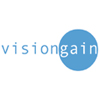Biosimilars and Follow-On Biologics: Global Market Outlook 2010-2025
28 Sep 2011 • by Natalie Aster

The biologic drug market is one of the fastest-growing sectors of the pharmaceutical industry. The leading drug class, by 2009 sales revenue, was monoclonal antibodies and AIFPs (anti-inflammatory fusion proteins).
The high revenues of this class of biologic will offer the greatest opportunity for biosimilar manufacturers from 2010 to 2025, Visiongain predicts in the report “Biosimilars and Follow-On Biologics: Global Market Outlook 2010-2025”.
Report Details:
Biosimilars and Follow-On Biologics: Global Market Outlook 2010-2025
Published: May 2010
Pages: 139
Price: US$ 2,350.00
Report Sample Abstract
Japanese Guidelines for Biosimilar Approvals, 2009
In Japan, guidelines for the approval of biosimilars were issued by the Ministry of Health, Labour and Welfare (MHLW) in March 2009. These guidelines consider biosimilar drugs that are equivalent and homogenous to the reference biologic product in terms of efficacy, quality and safety. The regulatory approval applications are categorised separately from conventional generic drugs. The applications must be submitted with data from clinical trials, details of manufacturing methods, long-term stability data and information on overseas use. The MHLW assesses data on absorption, distribution, metabolism and excretion (ADME) on a case-by-case basis.
In June 2009, Sandoz received approval for the first biosimilar in Japan, the recombinant human growth hormone somatropin.
Guidelines for the Development of a Biosimilar in Japan
In Japan, a biosimilar drug should be developed to be equivalent and homogeneous to the original drug. However, biosimilars are also requested to be developed with updated technology and knowledge. Therefore biosimilars need only to demonstrate enough similarity to the reference product to guarantee safety and efficacy.
Filing a Biosimilar Application in Japan
Applications for the regulatory approval of a biosimilar will be categorised separately from conventional generic drugs. In general, the applications must be submitted, as for new drug applications, with data on clinical trials, manufacturing methods, long-term stability and information on overseas use. The MHLW will assess the data on absorption, distribution, metabolism and excretion (ADME) on a case-by-case basis. The applications do not have to provide data on accessory pharmacology, safety pharmacology and genotoxicity, reports indicate.
Naming of Biosimilars in Japan
Biosimilars are required to use brand names and non-proprietary names of the original biopharmaceuticals (reference product) less the genetic recombination description. Non-proprietary names should also be followed by kozoku-1, meaning follow-on-1 and so on.
Economics of Biosimilar Development and Marketing
Even when biosimilar regulatory procedures are in place and biosimilar products reach the market in greater numbers, the biosimilar reality may not necessarily live up to some expectations of stakeholders. For example, the high biosimilar development cost may create a high entry-barrier for many companies and ultimately biosimilars may not offer the large cost savings that some groups are expecting. On the other hand, the development of biosimilars will likely offer important opportunities for contract research and manufacturing organisations worldwide.
More information can be found in the report “Biosimilars and Follow-On Biologics: Global Market Outlook 2010-2025” by Visiongain.
To order the report or ask for sample pages contact [email protected]
Contacts
MarketPublishers, Ltd.
Tanya Rezler
Tel: +44 208 144 6009
Fax: +44 207 900 3970
Analytics & News
